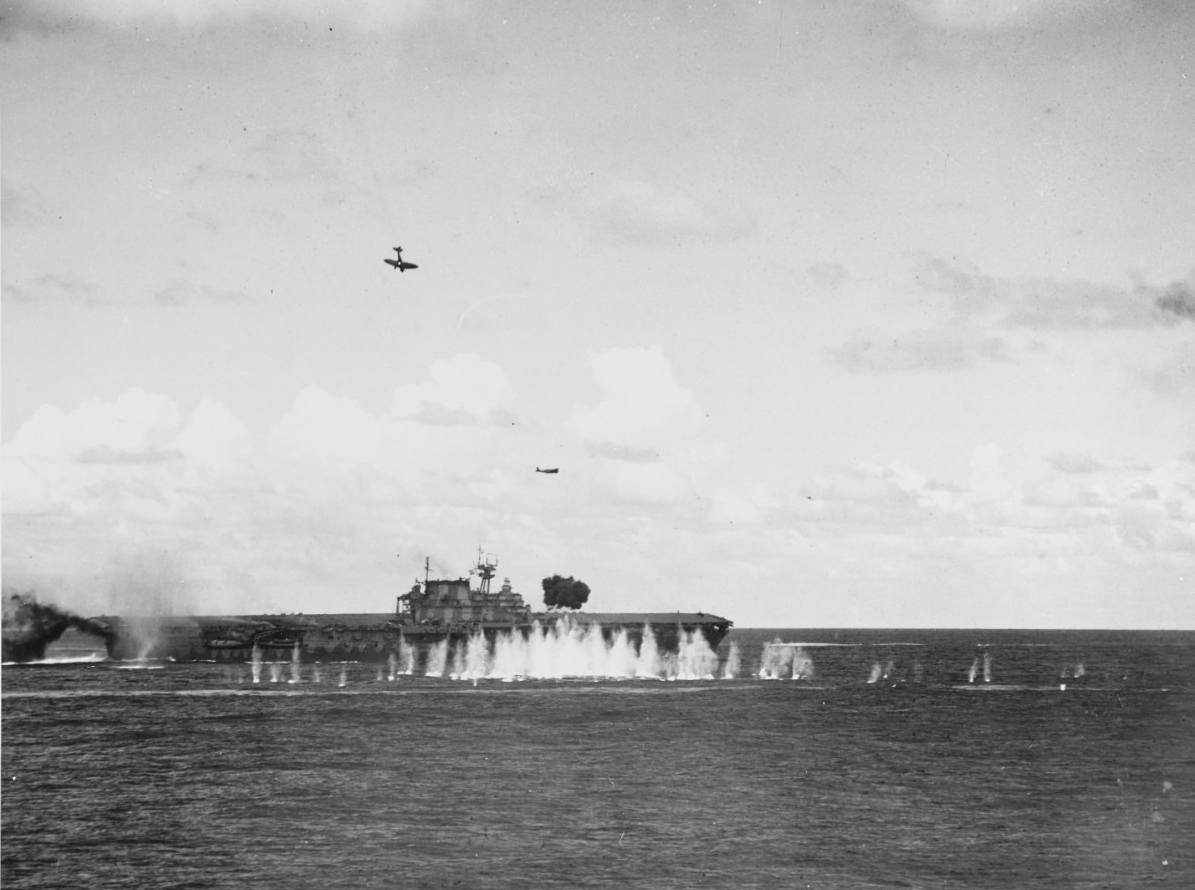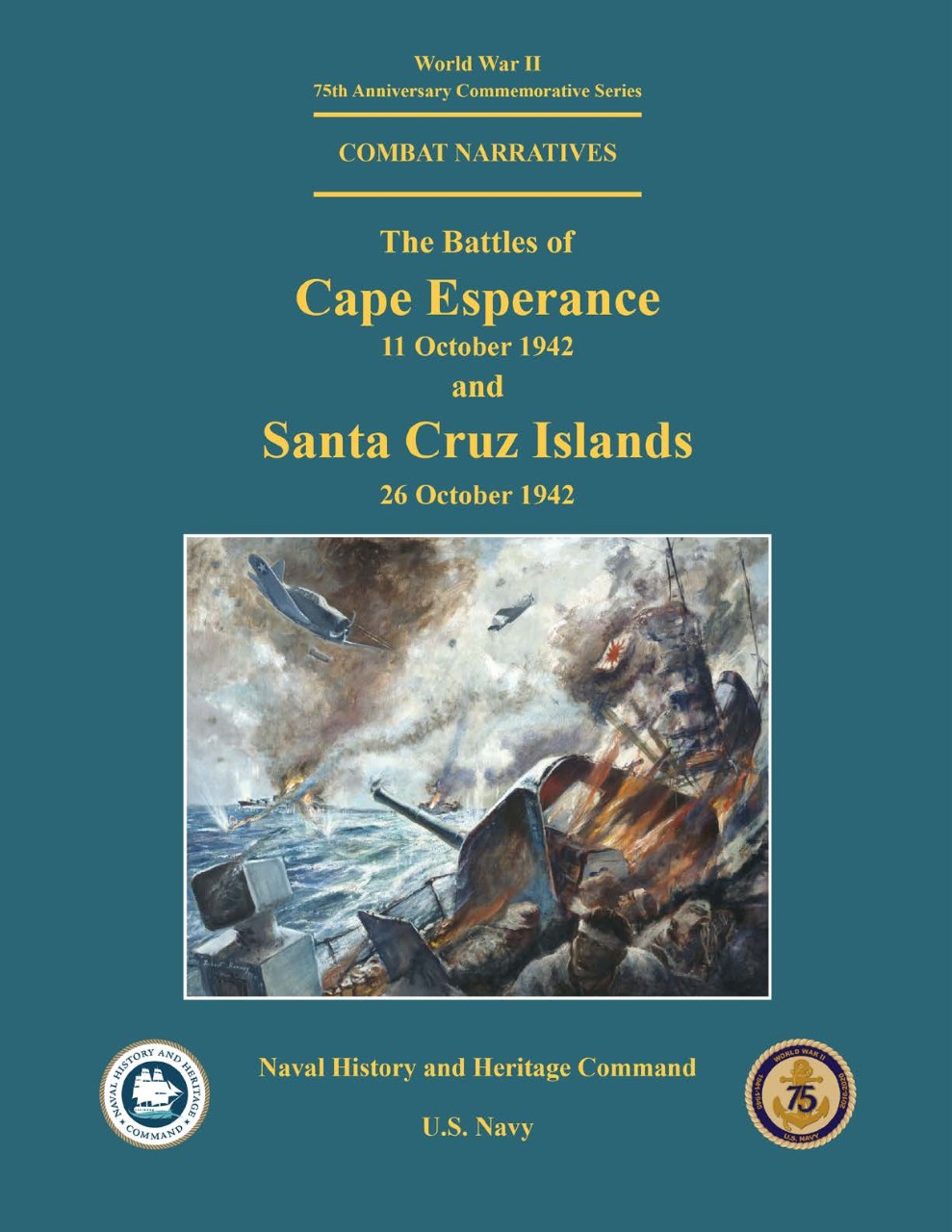Battle of Santa Cruz Islands, 26 October 1942
In support of a major ground offensive by the Imperial Japanese Army, Japanese carriers and other large warships were positioned near the southern Solomons in the hope of drawing out and decisively defeating Allied naval forces. As the Japanese ground offensive engaged U.S. forces in the battle for Guadalcanal’s Henderson Field, U.S. and Japanese ships and aircraft confronted each other on the morning of 26 October, just north of the Santa Cruz Islands. After an exchange of attacks by carrier aircraft, U.S. warships were forced to retreat from the battle area. Ultimately, U.S. losses were one carrier sunk and another severely damaged, one destroyer sunk and two heavily damaged, and 81 aircraft. Despite their successes, the Japanese also had to retire because of high aircraft (99) losses and significant damage to both of their carriers, a heavy cruiser, and a light cruiser. Although the enemy could claim a tactical victory, it was never able to make up for the loss of veteran aircrew personnel—contributing to the Allies’ longer-term strategic advantage. This factor also prevented any further significant participation of Japanese carrier forces in the Guadalcanal campaign.
Operations
Vignette: Lieutenant Commander William J. "Gus" Widhelm of Scouting Eight
Imagery
Battle of Santa Cruz Islands, 26 October 1942




